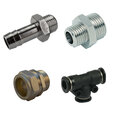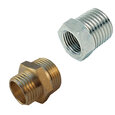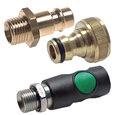What Is a Compression Fitting And How To Use One
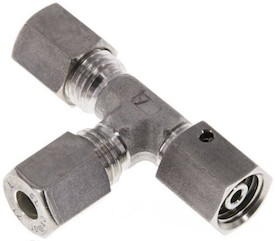
Figure 1: Compression fitting with three connections
Compression fittings are widely used in plumbing applications to connect pipes and tubing securely without soldering or specialized tools. This article explores the features of compression fittings, their working, and the essential factors to consider when selecting them for specific applications.
Table of contents
- What is a compression fitting
- How do compression fittings work
- How to use a compression fitting
- Selection criteria
- Disadvantages
- FAQs
View our online selection of fittings!
What is a compression fitting
Compression fittings connect pipes or tubing securely and are commonly used in plumbing and industrial applications. These fittings offer several advantages:
- Compression fittings eliminate the need for flare or solder preparation when assembling tubing. They can be used where heat sources like soldering torches are prohibited.
- They are quick and easy to use, requiring no special tools.
- They are ideal for joining tubes made of different materials and allow for easy disassembly and reassembly without compromising joint integrity. This makes them suitable for applications that require occasional maintenance or modifications.
To learn about fittings suitable in high-pressure applications, read our article on high-pressure compression fittings.
How do compression fittings work
Compression fittings have three main components: a compression nut, a compression ring (a ferrule), and a compression seat. The fitting is assembled by sliding the compression nut onto the pipe or tubing, followed by the compression ring. The pipe is inserted into the fitting's body or socket, and the compression nut is tightened. This action compresses the ring tightly around the pipe or tubing, creating a watertight or airtight seal.
How to use a compression fitting
- Preparation: Ensure the pipe or tubing ends are clean, smooth, and free from burrs or sharp edges.
-
Fitting assembly:
- Slide the compression nut onto the pipe or tubing, followed by the compression ring (ferrule).
- Insert the pipe into the fitting's body or socket until it reaches the desired depth.
- Tightening: Use an adjustable wrench to hold the body or socket in place. Firmly tighten the compression nut onto the body, ensuring a snug fit. Avoid over-tightening, as it may damage the fitting or cause leaks.
-
Check for leaks:
- Turn on the fluid supply and inspect the connection for any signs of leaks.
- Tighten the compression nut slightly if leaks are detected. Be cautious to avoid over-tightening.
-
Disassembling and reassembling (if required):
- To disassemble, loosen the compression nut and remove the ring, pipe, or tubing.
- If reassembling, ensure the components are clean and undamaged and follow the previous steps for fitting assembly and tightening.
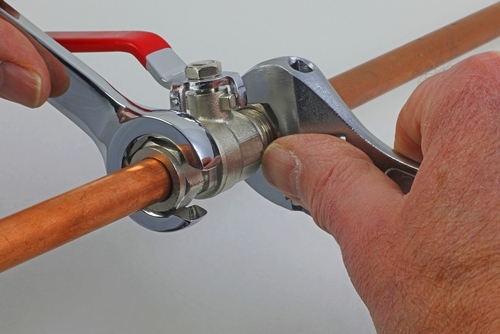
Figure 2: Compression ring fitting ball valve
Selection criteria
Here are the general selection criteria for compression fittings:
- Connection type and size: Ensure the compression fitting has the appropriate connection type for the specific system. This could include threaded connections (male or female), push-to-connect, or barbed connections. Also, determine the required thread size of the compression fitting and the compression ring connection port based on the specifications of the pipes or other components in your plumbing system. Ensure compatibility between the compression fitting and other fittings for a proper connection.
-
Design and configuration: Consider the specific design and configuration of the compression fitting based on the installation requirements.
- Choose compression fittings with two, three, or four connections depending on how the fluids should divert or combine.
- Consider straight fittings, elbows for directional changes, tees for branching connections, or reducing fittings for different pipe sizes (Figure 3).
- Fitting features: An adjustable feature in a compression fitting provides flexibility for alignment, positioning, or tightening during installation. It allows minor adjustments to ensure proper fit, accommodate space constraints, and optimize fluid or gas flow within the system.
- Load class: The DIN 2353 standard specifies the design and performance requirements for compression fittings used in hydraulic systems. The load class in DIN 2353 indicates the maximum working pressure the fitting can withstand. Each load class is assigned a specific pressure rating, ranging from light-duty (L) to heavy-duty (S).
- Connection type: Compression ring and swivel tube connection are used in compression fittings. Compression ring connection involves using a compression ring, or ferrule tightened around the pipe or tubing, creating a secure and leak-proof seal. Swivel tube connection, however, allows for rotation or swiveling of the tubing after it is connected, providing flexibility in positioning or alignment.
- Material compatibility: Consider the compression fitting material based on the application and the fluids or gasses being conveyed. Common materials include brass, stainless steel, and plastic. Choose a material suitable for the intended use and compatible with the system's requirements.
- Approval and certification: Check for certifications or approvals relevant to the compression ring fitting application. Common approvals include ISO 8434-1 and WRAS.
- Application-specific features: Consider any additional features or specifications required for the specific application. This could include features like drain ports, pressure gauge connections, or an integrated check valve.
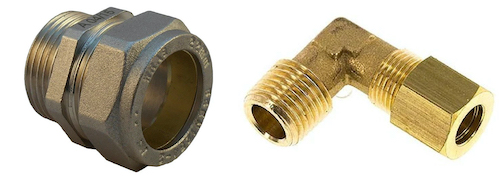
Figure 3: Straight (left) and elbow (right) compression fittings
Disadvantages
- Compression fittings may be bulkier and less aesthetically pleasing compared to soldered joints.
- They are less robust and more sensitive to powerful stresses than soldered fittings.
- Compression fittings are unsuitable for applications involving excessive flexing, bending, vibration, or tube movement, whereas soldered joints are more tolerant.
Read our articles on other fitting types like press fittings, hose barb fittings, and push-on fittings for the design and features of these fitting types.
FAQs
Can compression fittings be used with different types of pipes?
Yes, as long as the fitting and pipe materials are compatible, compression fittings can be used with various types of pipes, including copper, stainless steel, plastic, and PEX.
Can I reuse a compression fitting?
It is recommended to use a new compression ring component for each installation to ensure optimal performance and a reliable seal. The rest of the assembly can be reused.
Are compression fittings good for plumbing?
Yes, compression fittings are good for plumbing applications and are commonly used. They are safe, reliable, and provide a water-tight seal without the need for heat.




